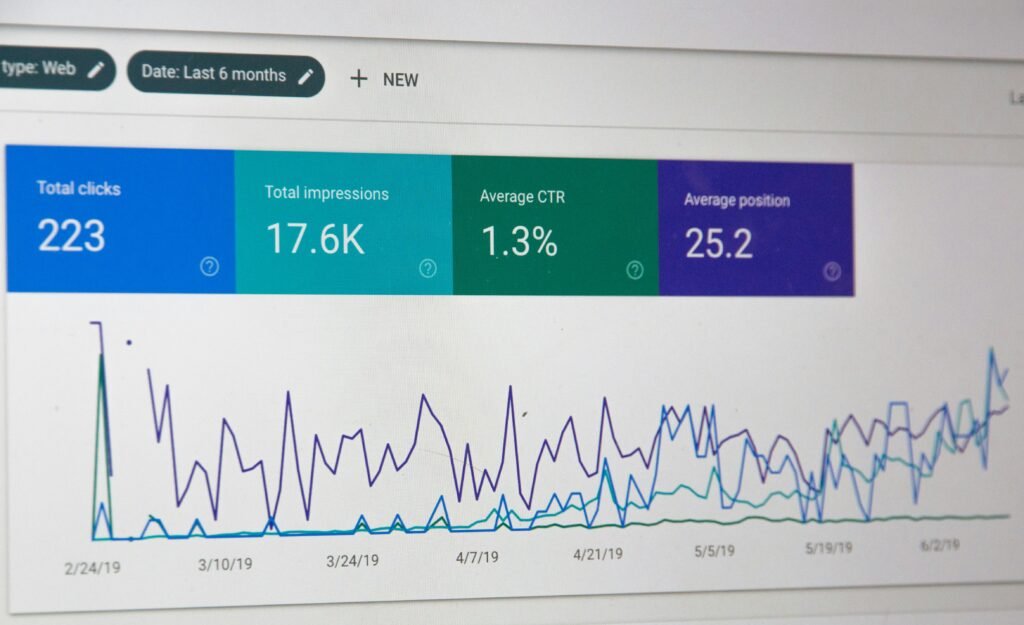
Introduction to Solar Energy
Solar energy is a form of renewable energy derived from the sun’s radiation, which can be harnessed and converted into usable electricity. Solar panels, also referred to as photovoltaic (PV) panels, operate on a fundamental principle known as the photovoltaic effect. This process involves the conversion of sunlight into electricity through the interactions of light photons with semiconductor materials, typically silicon. When sunlight strikes the solar cells, electrons are knocked loose, creating an electric current that can be harnessed for various applications, from residential power supply to large-scale energy production.
The significance of solar energy extends far beyond its ability to generate electricity. As a clean and renewable resource, solar energy plays a crucial role in mitigating climate change and reducing carbon footprints. By transitioning from fossil fuels to solar power, societies can decrease their greenhouse gas emissions and minimize air pollution. This shift toward sustainable energy sources not only benefits the environment but also promotes a healthier living space for future generations.
As nations across the globe grapple with the pressing challenges of energy demand and environmental degradation, the adoption of solar energy presents a viable solution. Integrated into the energy mix, solar power provides diverse advantages ranging from energy independence to economic growth through job creation in the renewable energy sector. Moreover, advancements in technology have significantly increased the efficiency of solar panels, making them more accessible and cost-effective for consumers and businesses alike. With considerable investments and continued innovation, solar energy promises to be a cornerstone of a sustainable energy future, contributing significantly to global efforts in combating climate change and fostering resilience in energy systems.
The Rise of Solar Panels in Recent Years
In the last decade, the adoption of solar panels has seen an unprecedented surge across the globe. As nations strive for sustainable energy solutions, solar technology has emerged as a formidable player in the renewable energy landscape. According to the International Energy Agency (IEA), global solar photovoltaic (PV) capacity has grown from approximately 177 gigawatts (GW) in 2013 to over 1,000 GW by the end of 2022. This staggering increase reflects not only the falling costs of solar installations but also growing awareness of climate change and the need for cleaner energy.
One of the most significant factors contributing to this rise is the technological advancements in solar panel efficiency. Innovations such as bifacial solar panels and improved energy storage solutions have optimized the functionality and output of solar systems. Consequently, residential and commercial sectors are increasingly investing in solar energy as an effective long-term solution. The global trend indicates that countries like China, the United States, and India are leading the way in solar installations, significantly contributing to global capacity growth.
Moreover, government policies and incentives have played a pivotal role in accelerating solar panel usage. Many countries are implementing programs that offer tax credits, rebates, or feed-in tariffs, encouraging both individual consumers and businesses to harness solar energy. For instance, the U.S. has seen a significant increase in installations due to the Investment Tax Credit (ITC), which allows individuals to deduct a percentage of the cost of installing a solar energy system from their federal taxes.
These trends suggest a robust future for solar energy, as more regions around the world are recognizing its benefits in reducing dependence on fossil fuels and addressing energy security challenges. Overall, the rise of solar panels is not just a trend but a reflection of a broader commitment to sustainability and environmental stewardship, marking a significant shift in energy production systems globally.
Top Countries Leading in Solar Panel Usage
Solar energy has become a significant focus for countries seeking to shift towards renewable energy sources. Several nations have emerged as leaders in solar panel installations, demonstrating the potential for solar energy to drive sustainable development. As of 2023, China, the United States, and Germany are at the forefront of global solar panel usage.
China leads with a staggering installed capacity of over 300 gigawatts (GW), solidifying its position as the world’s largest solar market. Factors contributing to this success include government incentives, extensive investment in solar technology, and a commitment to reducing carbon emissions. The country has built vast solar farms and encourages residential solar installations, enabling citizens to participate in the transition to renewable energy.
The United States follows in the second position with around 140 GW of installed solar capacity. Several states, particularly California, have implemented strong policies promoting solar energy adoption, including tax credits and rebates for solar panel installation. The rise of solar energy companies and advancements in technology have further enhanced access to solar solutions for businesses and homeowners alike. The collaborative efforts between state and federal governments have fostered an environment conducive to solar expansion.
Germany stands as the third-leading nation, with an installed solar capacity of about 70 GW. The German government has promoted renewable energy through its Renewable Energy Sources Act (EEG), which has facilitated the growth of solar initiatives. Public awareness of the benefits of solar energy, combined with financial incentives and community engagement, has significantly contributed to the widespread use of solar panels throughout the country.
In summary, the successful implementation of solar energy in China, the United States, and Germany showcases how government policies, technological advancement, and public engagement can transform solar panel usage and overall energy strategies on a global scale.
China: The Global Leader in Solar Energy
China has firmly established itself as the preeminent leader in solar energy usage on a global scale. This ascendance can be attributed to an array of strategic government policies, substantial investments in solar technology, and a robust manufacturing infrastructure that supports the production of solar panels. In recent years, China has made significant strides toward fostering a sustainable energy future, positioning itself at the forefront of the solar revolution.
Government intervention has played a crucial role in promoting solar energy adoption throughout the country. The Chinese government has initiated various incentives, including subsidies for solar panel installations, tax breaks for manufacturing, and favorable tariffs on solar imports. By enacting extensive policies aimed at increasing renewable energy sources and decreasing dependence on fossil fuels, the government has spurred both domestic and international players to invest heavily in solar infrastructure. Consequently, this commitment has led to an unprecedented increase in solar power generation capacity.
Furthermore, China boasts the world’s largest solar panel manufacturing sector. The country’s factories produce a significant proportion of the world’s photovoltaic (PV) cells and modules, significantly impacting global supply chains. The scale of production, combined with cost-effective manufacturing practices, allows Chinese solar companies to lower prices while maintaining high-quality standards, rendering solar energy more accessible to consumers worldwide.
In addition to manufacturing, China has invested heavily in large-scale solar farms that harness the sun’s energy on an industrial level. These extensive solar installations have catalyzed the growth of renewable energy projects, contributing to the country’s ambitious goal of achieving carbon neutrality by 2060. Through these initiatives, China has solidified its position as a vital player in the global solar energy landscape, continually advancing solar technologies and expanding its influence in this rapidly evolving market.
Germany: A Pioneer in Solar Energy Adoption
Germany has established itself as a frontrunner in the global solar energy market, being among the first countries to embrace solar technology on a substantial scale. Its journey began in the late 20th century when the government initiated various policies aimed at promoting renewable energy sources. The introduction of the Feed-in Tariff (FiT) system in 2000 was a significant turning point, ensuring fixed payments for solar energy producers and reflecting Germany’s commitment to transitioning from fossil fuels to sustainable energy sources.
One of the key facets of Germany’s solar success is its comprehensive policy framework that supports the development of photovoltaic (PV) systems across the nation. The federal government, alongside state authorities, has implemented financial incentives, subsidies, and tax breaks to encourage both individual households and businesses to install solar panels. This collective effort has contributed to Germany becoming one of the leading producers of solar energy, with installed capacity continually increasing over the years. As of 2023, Germany has surpassed 70 gigawatts of solar PV capacity, underlining its significant role in the renewable energy landscape.
Moreover, Germany’s ambitious renewable energy targets demonstrate its commitment to a sustainable future. The Energiewende, or “energy transition,” initiative aims to increase the share of renewables in the nation’s overall energy mix significantly by 2030. This initiative sets a target of generating at least 65% of the country’s electricity from renewable sources, with solar energy expected to play a crucial role in achieving this goal. Additionally, community solar projects have gained traction, empowering local citizens to invest in solar installations and augmenting local economies.
Through its early adoption of solar technology and progressive policies, Germany has not only paved the way for a sustainable energy future but has also inspired other nations to follow suit in their pursuit of renewable energy.
The United States: Growing but Lagging
In recent years, the United States has demonstrated significant growth in solar energy adoption, with installed capacity increasing from mere megawatts in the early 2000s to over 100 gigawatts by 2023. Despite this impressive trajectory, the nation still lags behind global leaders such as China and Germany. The strengths and weaknesses of the U.S. solar energy landscape can be attributed to a variety of factors, including state and federal policies, as well as prevailing challenges in the energy market.
At the federal level, the Investment Tax Credit (ITC) has played a pivotal role in promoting solar energy adoption by providing a substantial tax incentive for homeowners and businesses that invest in solar panel systems. Additionally, various states have implemented their own programs to support solar energy, such as Renewable Portfolio Standards (RPS) and net metering policies, which further encourage investment in solar technologies. Many states have successfully increased solar capacity due to these supportive measures, with California leading the charge as the largest solar market in the United States.
However, despite these advancements, several challenges continue to hinder the rapid transition to solar energy. Barriers such as inconsistent state policies, lack of utility support, and trade tariffs on solar components have made it difficult for the U.S. solar industry to reach its full potential. These obstacles have led to a fragmented market where solar energy adoption remains variable across different regions. Furthermore, competition from heavily subsidized solar manufacturers in other countries, particularly China, has made it increasingly difficult for U.S. companies to stand out in a global market.
Ultimately, while the solar energy sector in the United States is on an upward trajectory, a coordinated approach among federal and state entities, along with a commitment to overcome existing challenges, is essential for the nation to catch up with its global counterparts. Addressing these issues will be crucial to harnessing the full potential of solar energy and ensuring a sustainable transition to renewable energy sources.
Other Notable Countries in Solar Energy Usage
While countries like China and the United States often dominate headlines in solar energy usage, several other nations have made considerable advancements in harnessing solar power. These countries not only exemplify proactive policies but also illustrate notable technological innovations that contribute to the global shift towards renewable energy sources.
India stands out as a key player in the solar energy landscape. With its National Solar Mission, which aims to generate 100 GW of solar power by 2022, India has made remarkable progress. The government’s support for solar energy, including financial incentives and subsidies, has catalyzed the growth of large-scale solar farms and decentralized solar installations, particularly in rural areas. In recent years, India has successfully implemented diverse solar technologies, ranging from photovoltaic systems to solar thermal projects, thereby expanding its renewable energy portfolio.
Japan, notable for its resilience in the wake of the Fukushima disaster, has pivoted towards renewable energy sources, particularly solar power. The Feed-in Tariff (FiT) program introduced in 2012 has attracted investments and encouraged both residential and commercial adoption of solar panels. Japan’s commitment to energy independence and environmental sustainability is evidenced through ongoing research and development efforts aimed at boosting solar efficiency and storage solutions.
Australia also merits attention as a leader in solar energy utilization, boasting one of the highest per capita installations of solar panels globally. The Australian government, both at federal and state levels, has adopted supportive regulatory frameworks and incentive schemes for solar energy adoption. This has led to the proliferation of rooftop solar systems across households, transforming energy consumption patterns significantly and fostering a culture of solar integration in daily life.
These nations, through their robust solar policies and innovative technologies, play essential roles in advancing the global solar energy revolution. Their efforts not only contribute to reducing carbon emissions but also pave the way for a sustainable energy future worldwide.
The Future of Solar Energy: Trends and Innovations
The solar energy sector is on the brink of a remarkable transformation driven by several emerging trends and innovative technologies that promise to enhance efficiency, storage solutions, and grid integration. One of the most notable advancements in solar panel technology is the development of higher efficiency solar cells. Researchers are increasingly focusing on tandem solar cells, which combine multiple types of photovoltaic materials to capture a broader spectrum of sunlight, significantly increasing energy conversion rates beyond the conventional limits of silicon-based cells.
Moreover, energy storage solutions are evolving to complement these advanced solar panels. Traditional batteries have largely been utilized for storing solar energy; however, newer technologies, such as solid-state batteries and flow batteries, are gaining traction. These innovations not only improve energy density and longevity but also enhance safety and reduce environmental impact. The integration of such storage solutions with solar panels will enable more reliable energy access, particularly in regions with intermittent sunlight or fluctuating energy demands.
Another critical trend shaping the future of solar energy is the rise of smart grid technology. By integrating solar power generation with smart grid infrastructure, utility companies can optimize energy distribution and management. This technology facilitates real-time data flow between solar power systems and grid operators, thus enabling more efficient energy use, reducing wastage, and enabling better response to demand fluctuations. As smart cities and sustainable frameworks develop, integrating solar energy with such advanced systems will become essential.
In conclusion, as solar panel efficiency improves, energy storage solutions advance, and smart grid technology proliferates, the future of solar energy presents exciting opportunities. These innovations are poised to significantly impact global energy implementations, promoting cleaner, more sustainable energy systems that can meet the increasing global demand for renewable energy sources.
Conclusion: The Path Forward for Solar Energy Globally
The discussion surrounding solar energy has illuminated the significant strides made in solar panel usage across diverse regions of the world. Countries are increasingly harnessing the sun’s abundant energy, enabling a transformation in the global energy landscape. The benefits of solar energy, including its potential to mitigate climate change, enhance energy security, and provide economic advantages, underscore its importance in our modern world. However, despite this substantial progress, further advancements are essential for realizing the full potential of solar technology.
Collaboration among nations, industries, and research institutions is paramount in promoting solar energy adoption. By sharing knowledge, resources, and best practices, we can accelerate the transition to solar power and ensure that every region, particularly those with limited access to conventional energy sources, can benefit from this sustainable option. Public and private sectors must respond by facilitating policy frameworks that support innovation and investment in solar technologies. This can involve incentives for solar energy adoption, increasing funding for research and development, and lowering barriers to entry for new-market players.
Additionally, continued investment in solar infrastructure is crucial for overcoming interoperability and efficiency challenges. These investments should not only focus on manufacturing and installation but also on improving energy storage solutions and integrating solar energy into existing grid systems. As we witness ongoing advancements in solar technology, from bifacial solar panels to advanced photovoltaic systems, it is clear that innovation will play a vital role in future success.
In conclusion, the global solar energy revolution stands on the cusp of further growth. By fostering collaborative partnerships and investing in continual innovation, we can enhance the viability and accessibility of solar power. The journey towards a sustainable future powered by solar energy is one that requires unwavering commitment from all stakeholders involved.




